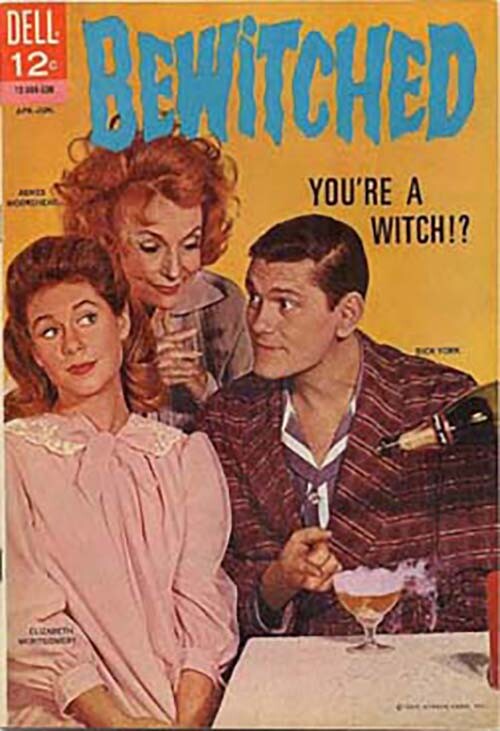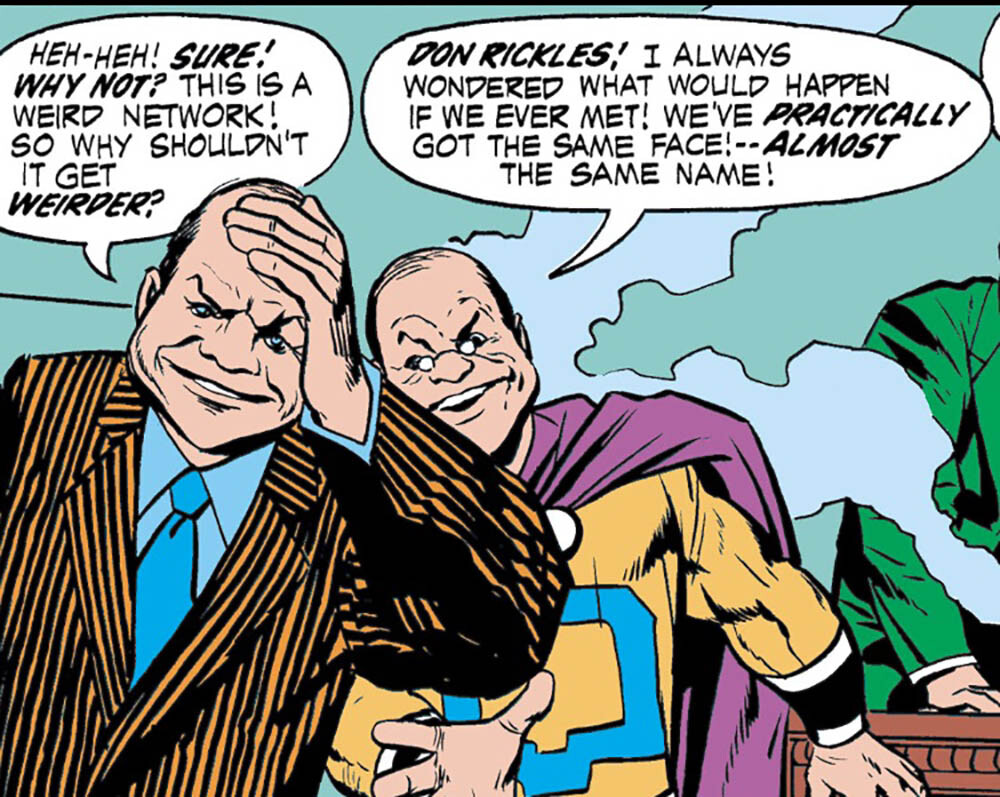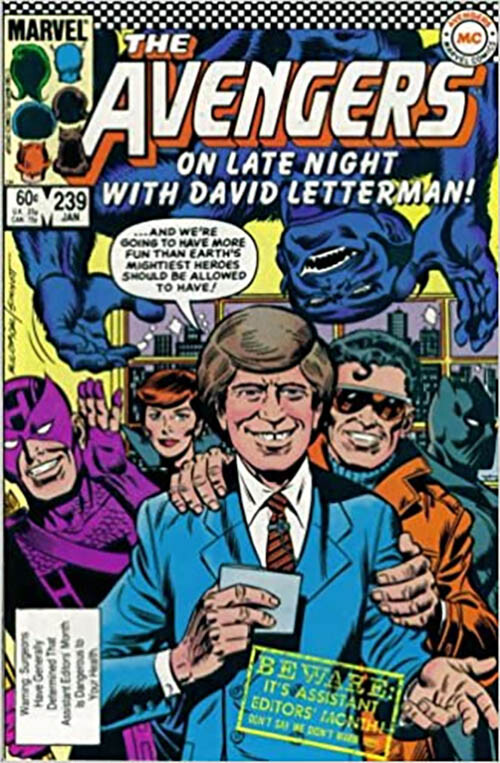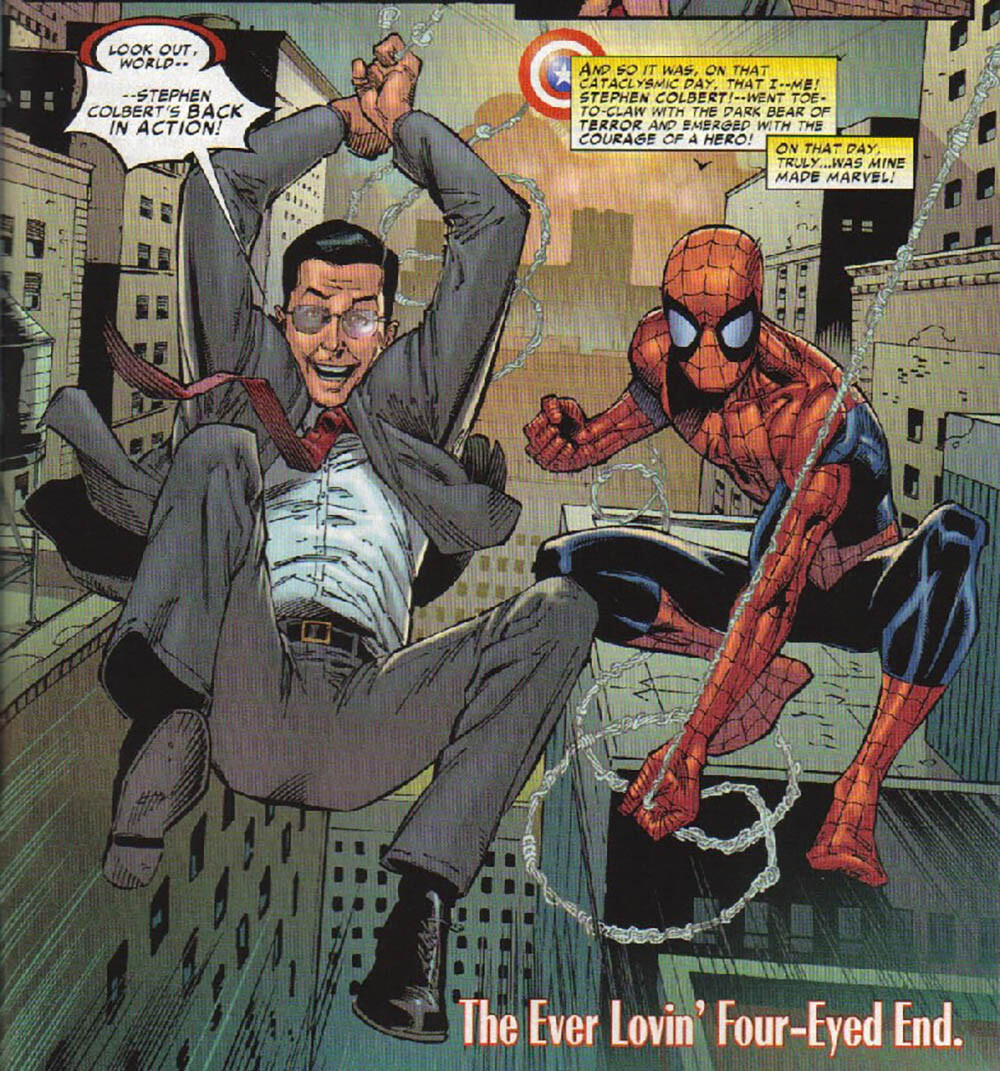7 Times Comedians Crossed Over Into Comic Books

Welcome to ComedyNerd, Cracked's daily comedy superstore. For more ComedyNerd content, and ongoing coverage of the Iran/Contra Affair, please sign up for the ComedyNerd newsletter below.
Comedians writing comics books has become a thing in the past few years. Patton Oswalt wrote a Justice League. Bill Hader and Seth Meyers tried a Spider-Man. Brian Posehn has penned a number of Deadpools. It’s nerd culture to the nth! But like superheroes showing up at SeaWorld, comedians aren’t new to comic books -- in fact, many of them have actually joined forces with superheroes. Here’s a brief ComedyNerd history of comics in comics.
They didn’t call them “comic books” for nothing
Comedians and comic books have a long history, but in the beginning, it wasn’t funny guys showing up to fart their way through superhero adventures. In the 1940s, 50s, and 60s, comedians headlined their own books.

Charlton Comics

Dell Comics

DC Comics
Famous funny people were considered easy sells, according to comics historian Joe Romanek, so licensing their likenesses for four-color adventures was a no-brainer. In addition to huge stars like Abbott and Costello, Lucy, and Bob Hope, a crazy number of comedians fronted their own (mostly short-lived) titles. That included actual comic acts like Charlie McCarthy, the Three Stooges, and Laurel & Hardy, as well as adaptations of just about every era sitcom you can think of, from the Brady Bunch to Beverly Hillbillies to Bewitched.

Dell Comics
Hey lady! Jerry Lewis gets in the Flash’s pants
As you might have guessed, the actual comedians were funnier than their comic book adventures. But things got interesting when entertainers from our Earth found themselves sucked into the comedy/comic nexus, entering the DC and Marvel universes to interact with actual freaking superheroes. And for that tradition, we may have to thank … Jerry Lewis?
While the majority of comic books based on real people or TV shows tended to last for only a handful of issues, man-child-idiot Lewis was an exception. For the first forty issues, his comic went by The Adventures of Dean Martin and Jerry Lewis. Then the comic, like the real-life comedian, dropped Dean Martin and became a solo act. The comic book chugged along for an amazing 124 issues -- nearly a twenty-year run.

DC Comics
The Jerry in the comic books wasn’t Comedian Jerry or Telethon Host Jerry or I Slept With Marilyn Monroe Jerry. He was a comic book character -- brilliantly-named Jerry Lewis -- who talked dumb and acted dumber. And in his comics, one of the world’s biggest movie stars crossed paths with the likes of Batman, Superman, and here, the Flash.
Our Flash story begins with Jerry and his irritating nephew agreeing to mind a tailor’s store while a couple of mobsters take said tailor for a ride and presumably, some dental work. Now in charge of the joint, Jerry doesn’t notice that the tailor dry-cleans costumes for the Flash’s extensive Rogues Gallery.
When the Scarlet Speedster shows up to investigate, Jerry asks the Flash to deliver costumes to all his arch-enemies. (Amazingly, we can find no record of The Flash ever delivering a pizza.) Since our hero is looking for the baddies’ hide-outs anyway, he obliges.

DC Comics
Things take an odd turn when Lewis later grabs Barry Allen, the Flash’s alter-ego, and promptly removes his pants. While it made sense that the Flash would play along to obtain the home addresses of his enemies, it's confusing that he lets Jerry disrobe him.

DC Comics
More hi-jinks ensue, with skinny Jerry donning a magic Flash costume (don’t ask). It’s typical slapstick mayhem, but Lewis broke new ground by meeting Earth's mightiest heroes. He’d set the stage for the next comedian to meet a member of the Justice League.
"I only pick on big guys"
In one of the comics industry’s weirder chapters, Jack Kirby left Marvel in the early 1970s to create a new set of heroes over at the Distinguished Competition. In a burst of fevered imagination, Kirby gave birth to Darkseid, Mister Miracle, and the New Gods -- and he tied all of them back to the DC universe via one existing title. For some reason, that title was Superman’s Pal, Jimmy Olsen.
All of Kirby’s DC output was profoundly bizarre, but it was about to get even stranger. Turns out that two of Kirby’s assistants, Mark Evanier and Steve Sherman, were huge fans of put-down comic Don Rickles. There’s was something about Rickles’ insult philosophy -- “I never picked on a little guy, I only pick on big guys” -- that made him seem like a comic book natural.

DC Comics
Don’s people signed off on the comics rights, and Kirby got to work. For some reason, he created two Rickles -- the original Mr. Nice Guy and a superpowered hero named Goody who “caused more problems than the villains!”
What comes next makes even less sense -- let’s call it punch-punch, space-battle, space-battle -- and eventually Rickles meets his doppelganger, who really should be a member of The Eternals.

DC Comics
The two-part story follows no logical throughline, but it is a lot of fun to see Rickles and Jimmy Olsen yukking it up. Even if Kirby’s goofy Rickles caricature makes him look like an actual hockey puck.
Heeeeeeeere’s Spidey!
The next comedian to cameo in a comic book was one of the biggest stars around: Johnny Carson. The appearance made sense, says Romanek, since Stan Lee always insisted that Spider-Man and the Fantastic Four existed in the reality of New York, not the comic-book blandness of Superman’s generic Metropolis. And if that’s where the web-slinger hung out, why wouldn’t Carson (who was taping in New York at the time) try to boost ratings with an appearance?

Marvel Comics
While this was Carson’s first face-to-face with Spider-Man, it actually was his second appearance in the web-slinger's comic book.
About 50 issues earlier, J. Jonah Jameson found a discarded Spider-Man costume and parlayed his find into an appearance on The Tonight Show, which is exactly how Dom DeLuise got into show business. There was even a comic book appearance by Ed McMahon. Hey-o!

Marvel Comics
Carson would show up again in Daredevil and the Avengers (he offered to pay the rent on the Avengers mansion until Tony got back on his feet), pretty good for a guy who would only turn up for his own show three times in a good week.
Live from New York, it’s Stan Lee!
Marvel Team-Up was a fun 1970s comic, each issue featuring Spider-Man partnering with another Marvel hero to toss Dr. Octopus behind bars once again. But readers were not expecting Spidey’s playful partners in issue #74: the Not Ready for Primetime Players.

Marvel Comics
The story launches with Stan Lee hosting an episode of Saturday Night Live. And … we’re not sure how that editorial process worked exactly? Did real-life Stan edit the book that he’s also a character in? One guesses Lee used this issue as a transparent attempt to get a hosting invite.

Marvel Comics
Things get rolling fast in the story when a fan sends Belushi a mysterious ring from Japan, as fans do.

Marvel Comics
Which inevitably leads to Belushi and Spider-Man battling an actual samurai.

Marvel Comics
This one ranks high on the comics-in-comic list, not only for including all seven members of the SNL troupe but for involving them in the action rather than simply showing up for a two-panel cameo.
“You know, kids, I had a great time,” says Stan at story’s end. “But the live show was nothing like the rehearsals.”
“It never is,” replies Gilda. “That’s why it’s so much fun.”
More fun than the Earth’s Mightiest Heroes should be allowed to have
An Avenger booked on Late Night with David Letterman? It happened, True Believer.

Marvel Comics
You may remember that Wonder Man’s alter ego is actor Simon Williams. If you don't, you're forgiven and actually normal. When he gets booked as one of Dave’s special guests, he invites a bunch of Avengers -- namely Beast, Hawkeye, Black Widow, and Black Panther -- to come along. And because it makes no sense, they all say yes. Of course, no one was more thrilled than bandleader Paul Shaffer.

Marvel Comics
A C-list villain named the Mechano-Marauder shows up on set, taking out a few Avengers with his assortment of weapons. Luckily, Dave’s on hand to bash the bad guy with a Giant Doorknob.

Marvel Comics
It was Dave’s only appearance with superheroes -- though he did turn up in fave guest Harvey Pekar’s American Splendor.

Harvey Pekar
Truthiness is next to webbiness
In this issue of The Amazing Spider-Man, Stephen Colbert's exists as his oversized Colbert Report alter-ego, not as himself IRL.

Marvel Comics
The story was a back-up so it didn’t take long to tell. It won’t here either. Colbert spots Spidey fighting Grizzly and wants to help. Spidey says no. Then Colbert pushes a statue off a building and it conks Grizzly in the head. The end!

Marvel Comics
On our Earth, Colbert made noise in 2016 when he wanted to disprove a Cambridge University study (as Colbert called it, “a Ph.D. thesis on destroying my childhood”) that said a real-life Spider-Man could not crawl up walls. With the help of Stanford scientists, Colbert reported that it was indeed possible! Life is a treasure.
Stay out of my you-know-what!
While comedian Brian Posehn was not a character in a Deadpool comic, he has written several stories for the book -- which explains why Sarah Silverman showed up in a 2015 issue. The two comics are weed-smoking buddies from way back.

Planet Arium
The plot -- at least as it relates to Silverman -- turns on Deadpool signing up to become a paid spokesperson for Roxxon, a not-so-clean company that developed a funky energy-gathering process called gamma fracturing (or gracking). Silverman, naturally, isn’t having it. The scene is drawn coloring-book style because Deadpool.

Marvel Comics
Sarah eventually teams up with the Merc with a Mouth to battle Roxxon’s evil CEO, who has taken on the form of a minotaur. Life is a maze? Again, pot smoking.
Which brings us to 2021 & the next comedian/superhero team-up is probably somewhere just over the horizon. How about an Aziz Ansari/Blue Beetle crossover? Bo Burnham and Ms. Marvel? Tig Notaro battles Moon Knight? Yeah, none of it makes sense -- and that’s exactly why it could be great.






